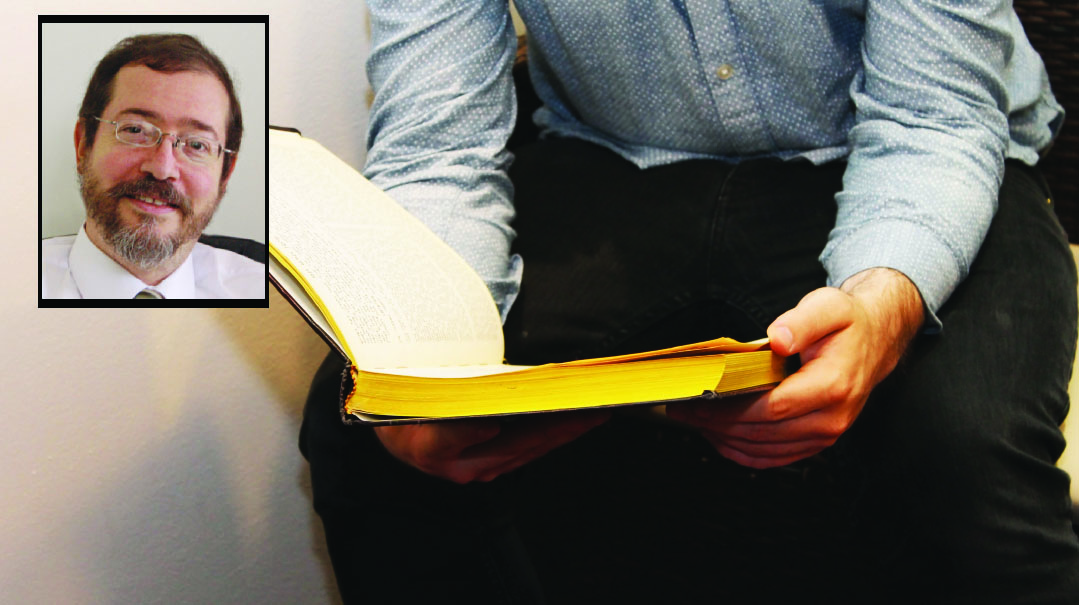Inside Track

It wasn't a bris. Or maybe it was

One morning last week, I joined a dear friend at his home in my neighborhood for a simchah. My friend, whom I’ll call Larry (because that’s his name), had prepared a plentiful spread of bagels and lox and pastries and coffee for the 20 or so men who attended.
Bagels and lox and a gathering of Jews on a Sunday morning — but it wasn’t a bris. Or maybe it was.
HaKadosh Baruch Hu saw fit to enter a special bris with Klal Yisrael regarding Torah shebe’al peh (Gittin 60b). That morning, my friend Larry became a party to the unique covenant between G-d and Israel in the most powerful way imaginable: He made a siyum on all of Shas.
Considering where he and his wife Susie each once were, and the respective roads they took to get to their destination, to the world of Torah and mitzvos, those words — “made a siyum on all of Shas” — are so easy to casually say, but so difficult to believe have come true. Just two decades ago, they were unthinkable to him.
I’m not going to share the details of Larry and Susie’s entire fascinating story here (perhaps another time). But here’s part of what my friend said last week about his experiences:
In 1974, I crossed the Atlantic Ocean on a ship. It took the better part of five days. An experienced sailor would probably say the trip was relatively smooth, but it took me half the trip to get used to the rolling. By the way, if you’re ever in rough seas, a glass of brandy at the bar is helpful (actually it works even without the bar). I did not bentsh Gomel when I landed.
A few times, I went to the rear and watched the wake unroll behind us. After about half a mile, the wake disappeared in the waves and as far as the appearance of the water was concerned, there was no way to tell the ship had ever been there. This was no small ship, but the ocean is many orders of magnitude larger.
I’m reminded of this because I’ve just finished crossing another ocean. This time the trip took 17 years. I skipped the brandy altogether (didn’t need it). I can still see the wake I made. And I believe this gathering could be considered the equivalent of bentshing Gomel in gratitude. All of you, over the time I’ve lived here, have learned or are now learning with me, and I sincerely acknowledge your contribution to my Yiddishkeit.
Every bris, even this kind, requires the equivalent of a mohel, the person most responsible for first introducing another Jew to the covenant with Hashem. In Larry’s case, that was Rabbi Baruch Zaitschek, who has braved the wilds of New York’s Westchester County for decades just to be able to bring many, many Jews closer to their Creator. His mesirus nefesh in doing so stands out even within a kiruv world known for selfless dedication.
When we speak of entering a bris, a covenant, as in the words a father recites at a bris milah, l’hachniso l’briso shel Avraham Avinu, maybe that’s because it’s something much larger than any one of us. It encompasses all of Jewish history and all of the Jewish People, and when we venture inside, we realize how insignificant we are in comparison.
Certainly, when it comes to entering into the bris of Torah shebe’al peh, one who enters it quickly discovers just how small he is relative to the vastness in breadth and depth of the Torah he’s set out to study. Just as there are structures where the entrance requires one to bend down a bit in order to get inside, so, too, with Torah there’s a bowing of the head that’s necessary to succeed. You need to humbly acknowledge your limitations and suspend your preconceptions, fitting your reasoning powers and moral sense to that of Torah, not vice versa.
My friend has many endearing qualities, but watching him speak that morning, it seemed that perhaps more than anything, it’s his quiet self-effacement that has brought him to this high achievement. He and his wife are urbane, accomplished people, but they know the ultimate sophistication is to know what you don’t know and how much more there still is to learn.
As Larry read the last passage of the masechta, which refers to talmidei chachamim as “bonim” (“builders”), it occurred to me how apt it was, since he’s an architect by profession. Architects work with plans, and he spoke of those, too — of his intentions to alter the proportion of his learning to working time, to improve his language skills and go deeper into the commentaries.
He’s designed his own Beis Hashem, in which he hopes to dwell all his life, with his wife’s support and encouragement and his friends’ admiration.
Originally featured in Mishpacha, Issue 864. Eytan Kobre may be contacted directly at kobre@mishpacha.com
Oops! We could not locate your form.





